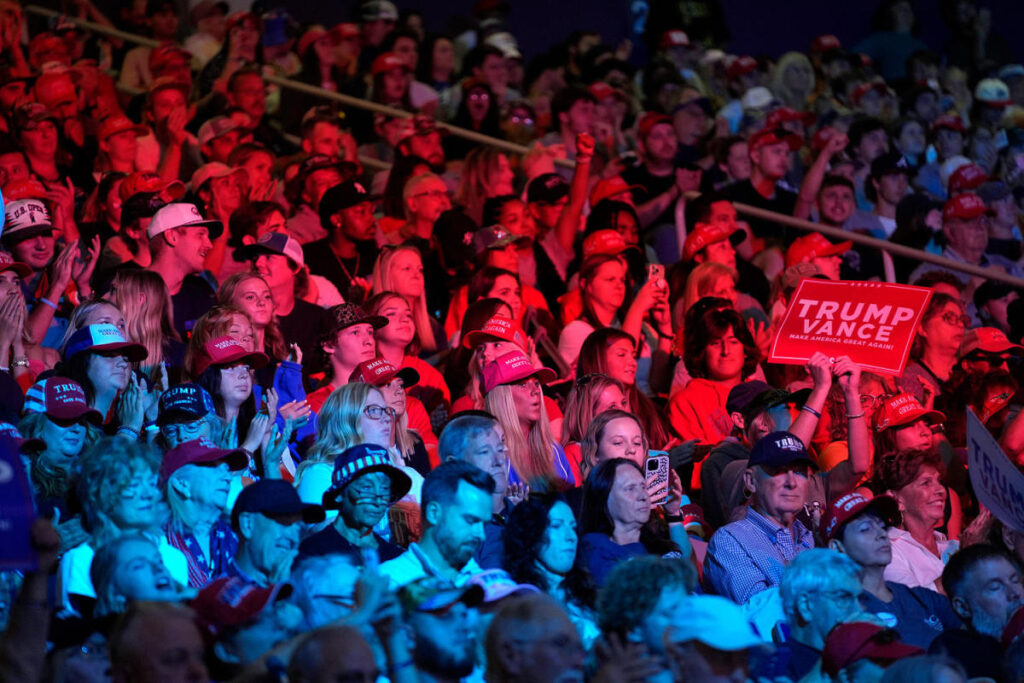The online newsletter “From the Politics Desk” provides in-depth coverage of the political landscape leading up to the presidential election. The latest edition, penned by senior political editor Mark Murray, centers on NBC News’ polling data and its implications for Donald Trump’s support among infrequent voters. The core question posed is whether these voters, who show a preference for Trump, will turn out at the polls in the upcoming 2024 election. Analysis of data reveals a stark contrast in engagement levels between infrequent voters and those who participated in the previous two elections, with concerns about whether the former group, notably less enthusiastic about the 2024 race, will ultimately cast their ballots.
The report emphasizes the distinct voting behaviors noted in recent polls, particularly regarding Vice President Kamala Harris’s support among regular voters compared to Trump’s backing among infrequent voters. The analysis shows Harris’s advantage among those who participated in both 2020 and 2022 elections, while Trump has garnered support from voters who participated only in the 2020 election and those who didn’t vote at all in either election. This demonstrates a realignment in political support: while Democrats tend to rally lower-turnout elections, Trump finds an edge when voter turnout is high. This dynamic poses a genuine challenge to Trump, highlighting the necessity of transforming poll numbers into actual votes.
Intimately tied to this discussion are the results from focus groups comprising non-participating voters from 2020. Insights gleaned from these discussions reveal their reluctance to vote in previous elections due to various circumstances such as work, family obligations, and pandemic-related issues. However, their responses lean favorably towards Trump when reflecting on the previous administration—characterizing that period as “prosperous” and “normal” compared to the current struggles they experience. This paints a complex picture of potential voter motivation based on perceived quality of life under Trump, raising the stakes regarding whether these voters will ultimately follow through with their intentions to vote in 2024.
Moving beyond overarching national trends, the newsletter zeroes in on the critical battleground states known as the “blue wall,” specifically Michigan, Pennsylvania, and Wisconsin. In Michigan, the Harris campaign is strategically counting on suburban voter support to offset potential losses in urban areas and demographics traditionally associated with the Democrats. Conversely, Republican candidates aim to gain ground by promoting messages of civility, distinctly avoiding direct associations with Trump’s more divisive rhetoric. In Pennsylvania, the Harris campaign has established an extensive grassroots operations campaign, emphasizing direct voter engagement through door-knocking efforts to solidify their base and outmaneuver Trump’s campaign presence.
Campaign dynamics in Wisconsin reveal a similar pattern, with the Harris team actively securing endorsements from Republican figures to appeal to moderate and undecided voters—an essential strategy to counter Trump’s influence in a state with a history of fluctuating loyalties. The newsletter also discusses broader issues within the electoral landscape, including alarming increases in rhetoric around election fraud and related violent sentiments observed at Trump rallies and echoed by intelligence agencies examining potential threats linked to domestic extremism related to electoral conspiracy theories.
As the election approaches, a cautionary note is observed in the report about interpreting early voting numbers. The nuances of partisan breaks in early voting suggest that it is premature to leap to conclusions regarding any shifts in voter sentiment. Amid this fluctuating landscape, the newsletter highlights various races that could be more competitive than anticipated, signifying that both parties need to remain agile and responsive to the electorate’s evolving preferences. With just days left before the election, the critical question remains whether the growing support for Trump among infrequent voters will transition into meaningful participation at the polls, determining the outcome of a closely contested presidential race.

